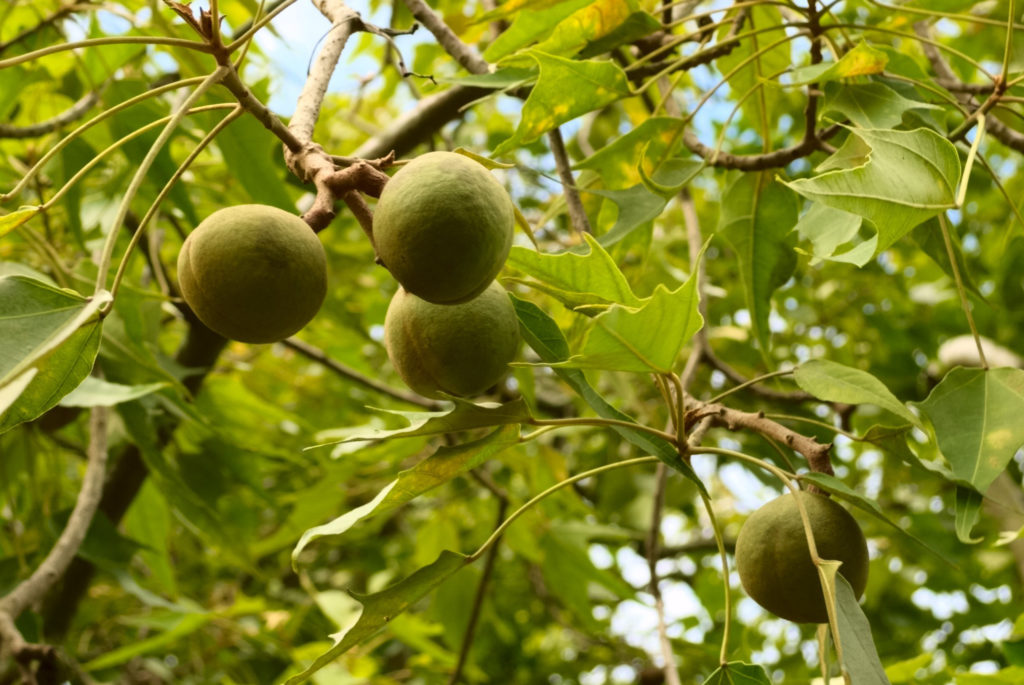The Kukui Nut lei meaning and its history in Hawaii are fascinating. Learn all about it here!
It’s easy to spot a kukui nut tree in Hawaii; just look for the canopy of shimmering silvery-green leaves, and you’ll know what we’re talking about. They glisten under gentle morning rays, swaying this way and that, and bring us back in time, reminding us of Old Hawaii.
But what about the kukui nut lei and its meaning in Hawaii? It’s more than a souvenir – it’s an important part of Hawaiian culture.
What is the Kukui Nut?
Early Hawaiians used the nuts of the tree for spiritual, medicinal, and navigational purposes; however, the most common usage was for light. When strung in a row on a palm-leaf midrib and lit, the nuts looked very much like a candle. In fact, this is how the tree got its Hawaiian name, which means “light” or “lamp.” In English, it’s more commonly called the candlenut tree.
Today, kukui nut lei has become a symbol of a Hawaiian vacation, thanks to tourism advertisements and popular media. Tourists and tour guides often wear them. They’re easy to find and quite affordable. You can get the lei from gift shops and most street-side vendors in Hawaii.

Traditional Kukui Nut Lei Meaning
This was not the case in ancient times, however, because only royalty wore these lei made of sleek black nuts. It was a way to show the social status of the aliʻi, as well as honor Lono, the god of agriculture, peace, and fertility.
In fact, Hawaiians consider kukui to be the kino lau, or physical manifestation, of Lono, and it’s because of this that kukui trees would be most abundant during times of harvest.
This Polynesian-introduced plant also honors the Oahu pig god, Kamapuaa. If you look closely at the shape of the tree’s leaf, then you’ll notice it resembles the face of a boar.
In elementary, I remember tracing the kukui leaf on paper and making pig masks out of them. This could be a fun outdoor activity if you’re traveling with kids. The trees grow all over the islands, usually at the base of mountains.
Today’s Kukui Nut Lei
Today, kukui nut lei are exchanged throughout Hawaii, and they often carry great meaning. Sometimes they’re worn as a symbol of knowledge and enlightenment. Many people also exchange them to express a deep bond.
As for you, you’ll likely see them at many gift shops and lei stands throughout Hawaii. Now that you know the meaning of the kukui nut lei, you may decide it’s the perfect token to carry home with you.
Unlike fresh flower lei, the kukui nut lei will last forever. So you don’t have to figure out what to do with old lei if you choose a kukui nut one. You can bring them home with you as a reminder of your trip to the islands but most importantly, as a reminder of the kukui nut lei’s meaning and significance to Hawaiian culture.




